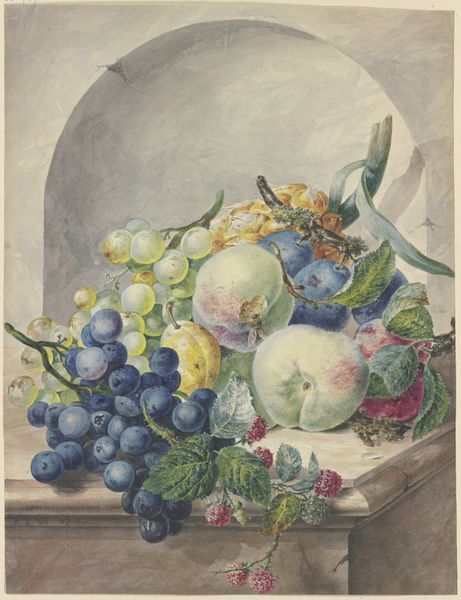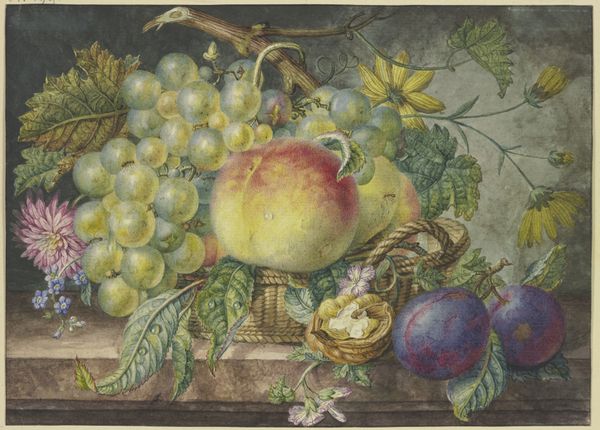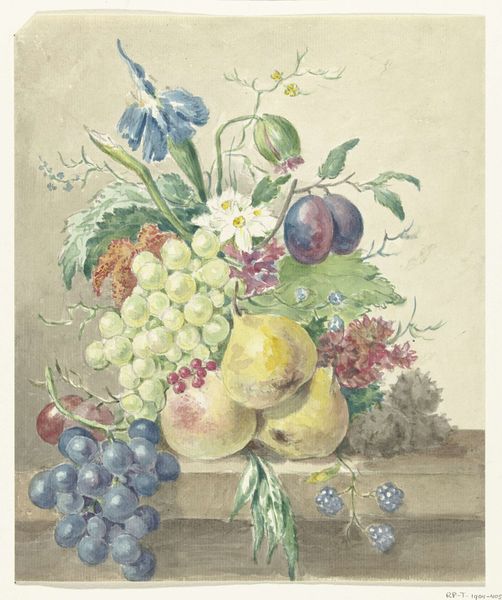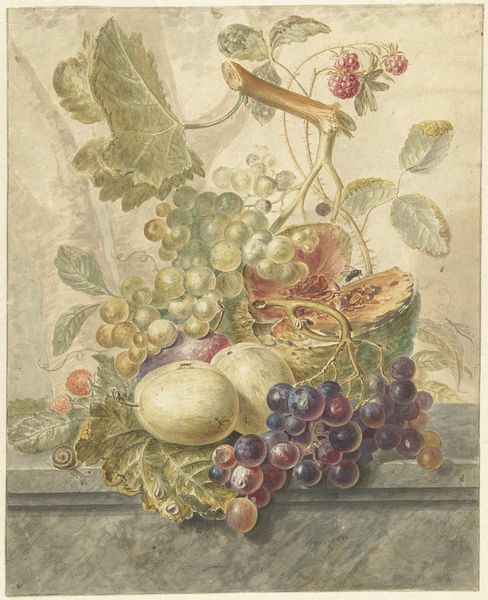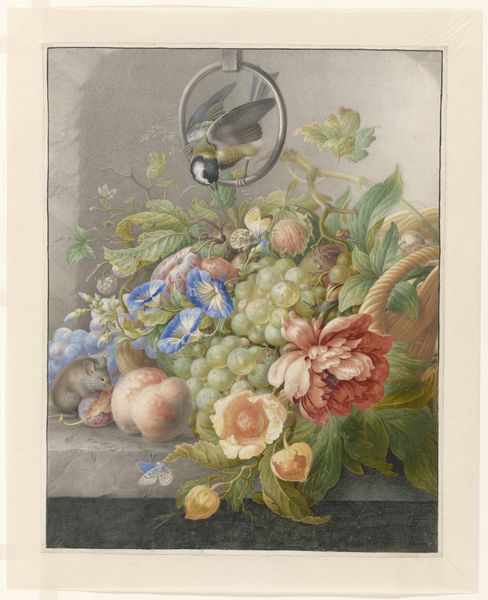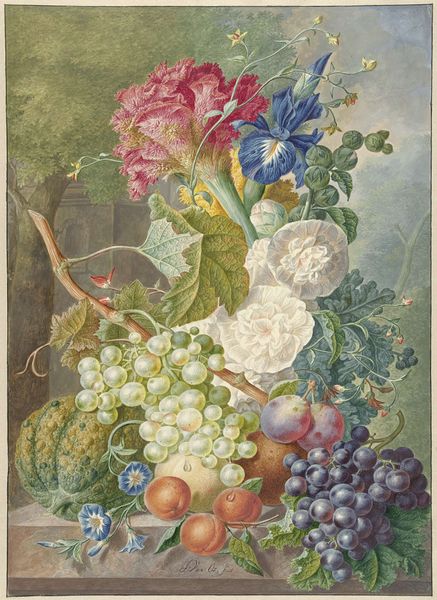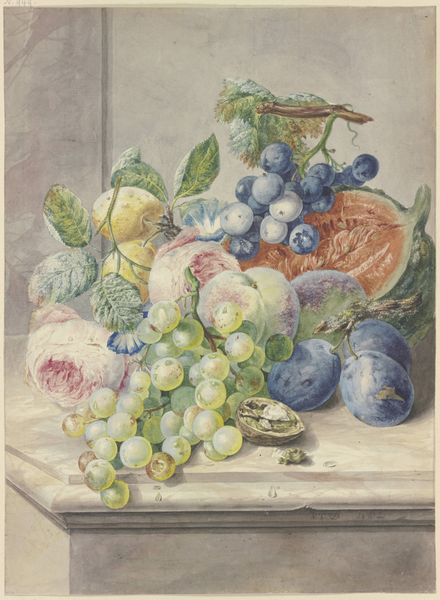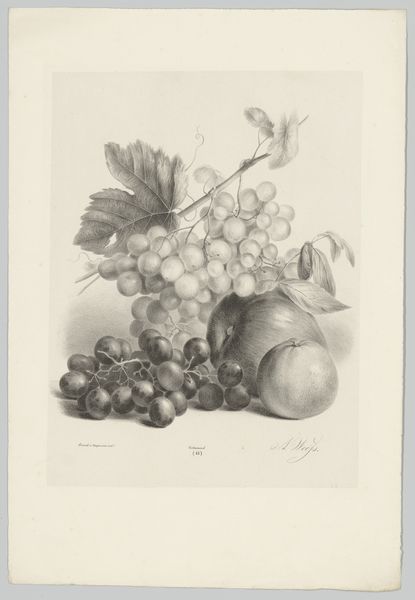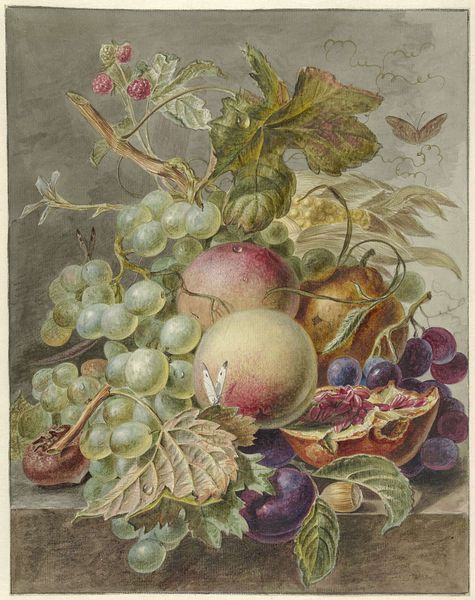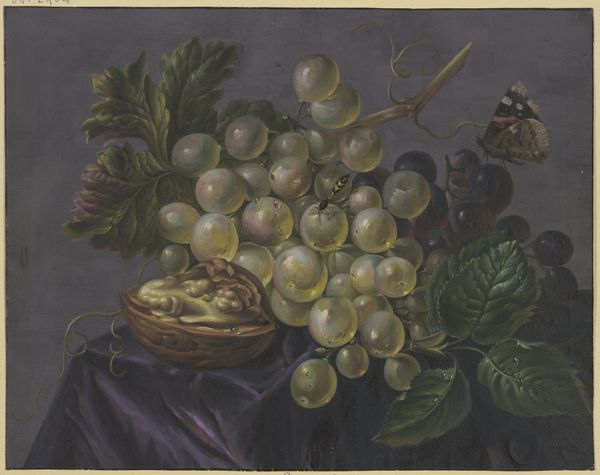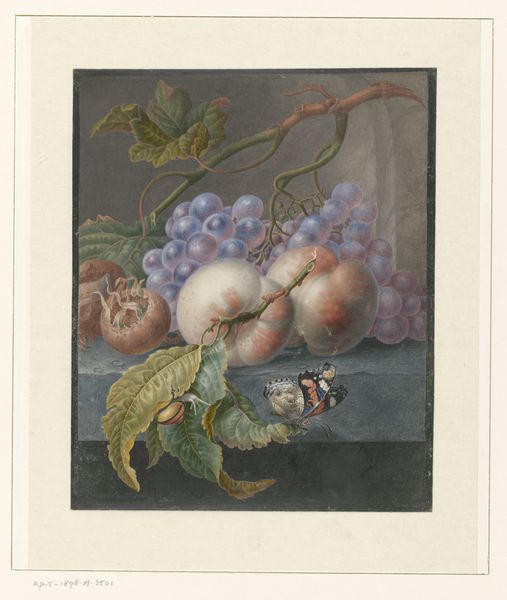
watercolor
#
water colours
#
dutch-golden-age
#
watercolor
#
fruit
#
watercolor
Dimensions: height 420 mm, width 338 mm
Copyright: Rijks Museum: Open Domain
Editor: This is “Fruitstilleven” by Herman Henstenburgh, a watercolor piece made sometime between 1677 and 1726. It's incredibly detailed, especially the textures of the fruit and the woven basket. I'm struck by how it blends still life with almost scientific observation. What draws your eye to this work? Curator: My focus goes straight to the materials, the watercolor itself. Consider the period; Dutch Golden Age. There was intense competition and stratification among artists depending on what materials they were thought to master. Watercolor was often seen as 'lesser' than oil paint. This piece subtly challenges that hierarchy by displaying incredible skill within a seemingly 'lower' medium. Notice how Henstenburgh meticulously renders each piece of fruit? Editor: Yes, it's almost photographic in its detail. So, you’re saying his choice of watercolor becomes a statement in itself? Curator: Precisely! It becomes a commentary on artistic labor and value. Watercolor requires speed and precision, limiting rework, requiring an artisan's mastery, pushing against this separation of 'art' and 'craft.' Think about where he likely sourced these pigments. Who ground them? What were those individuals paid? Each detail ties into a wider network of material production. What about the dog, what might that have meant to viewers? Editor: I didn't think of that. It looks almost taxidermied in place amongst this vibrant food display! It's a reminder, maybe, of domestic consumption... all these items being presented for display... Curator: Exactly. It underscores our own act of consuming, both visually and materially, extending far beyond the limits of the piece of paper we observe! It helps reveal an underlying context about economic and social status of the artwork owner and the labor required. Editor: That's a really interesting way to look at it. I usually focus on the subject matter, but considering the materials opens up a whole new layer of understanding. Curator: The piece becomes more about the process of its making, who made it, and for what purpose rather than just the objects displayed, thereby highlighting labor value. Editor: I’ll definitely be thinking about the 'means of production' more consciously now when looking at art.
Comments
No comments
Be the first to comment and join the conversation on the ultimate creative platform.
